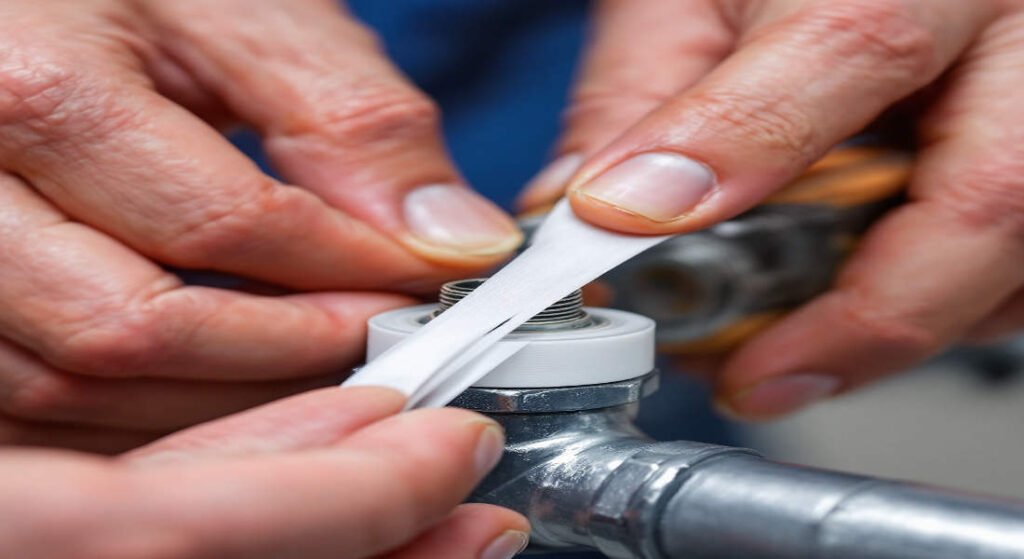Plumbing tape, often referred to as Teflon tape or thread-seal tape, is a household essential that frequently flies under the radar. Despite its simple appearance, this humble roll of tape plays a pivotal role in preventing leaks, ensuring secure connections, and extending the life of your plumbing system. Whether you’re fixing a leaky faucet, installing a new showerhead, or upgrading your home’s plumbing system, knowing how much house plumbing tape to use can make all the difference between a successful repair and a frustrating leak.
What is Plumbing Tape?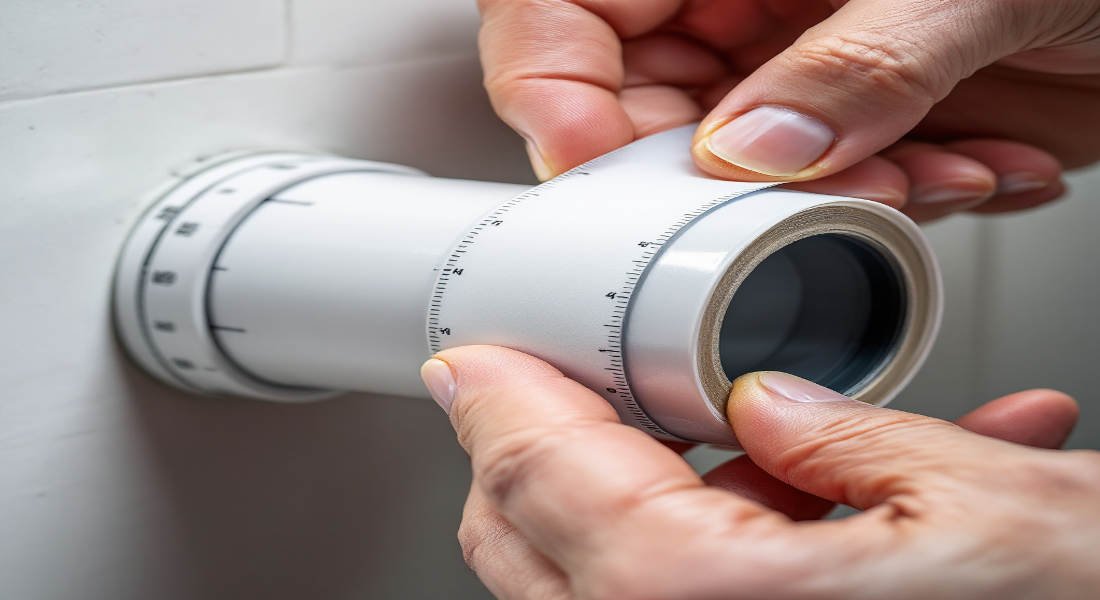
Plumbing tape is a specialized tool designed to seal pipe threads, preventing leaks and ensuring smooth connections in plumbing systems. It is durable, easy to use, and affordable, making it a popular choice for both professionals and DIY enthusiasts.
Types of Plumbing Tape
There are a few different types of plumbing tape, each suited for specific tasks:
- PTFE/Teflon Tape:
- This is the most common type of plumbing tape made from polytetrafluoroethylene (PTFE). It’s flexible, resistant to high temperatures, and ideal for sealing threads on metal pipes.
- Thread-Seal Tape:
- Similar to PTFE tape, thread-seal tape is used to seal threaded pipe connections. It’s often available in different colours, each indicating a specific use.
- Non-Threading Tape:
- This variant is less common and is used in special applications where traditional thread-seal tape might not be effective.
Common Uses of Plumbing Tape
- Sealing pipe threads to prevent leaks.
- Lubricating threads to make assembly and disassembly easier.
- Protecting metal threads from corrosion.
Advantages of Using Plumbing Tape
- Leak Prevention: It acts as a sealant, preventing water or gas from escaping.
- Thread Protection: It reduces wear and tear on threads during assembly.
- Ease of Use: Even beginners can apply plumbing tape with minimal guidance.
Understanding the Purpose of Plumbing Tape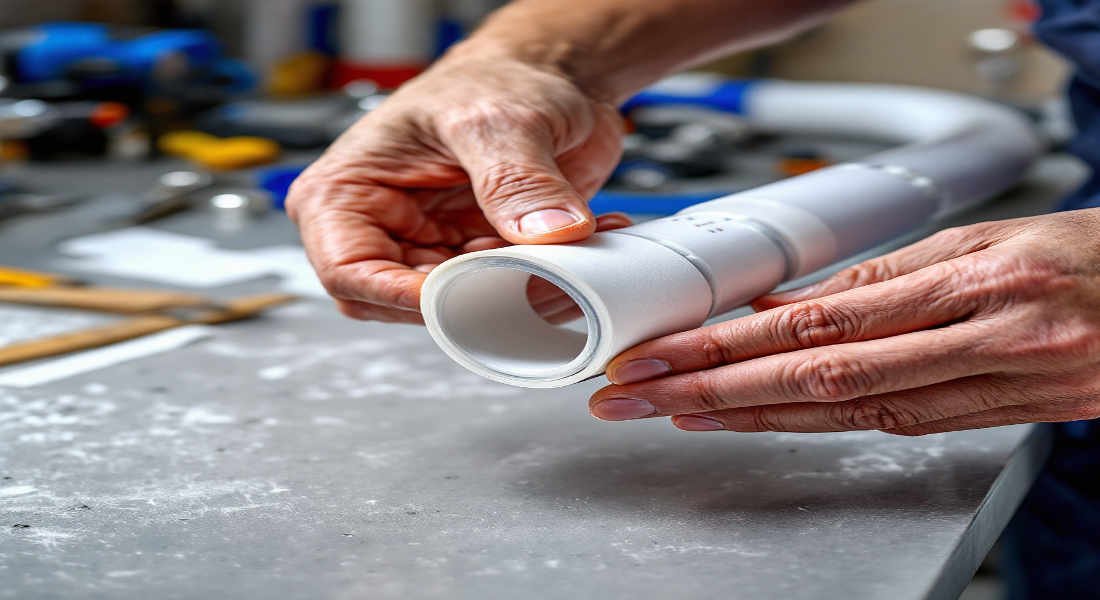
To better appreciate why plumbing tape is so effective, let’s examine its purpose and how it works.
How Plumbing Tape Seals Pipe Threads
When applied correctly, plumbing tape fills the gaps between threaded connections. These gaps, though small, can lead to leaks if left unsealed. The tape creates a watertight or airtight seal by forming a barrier that prevents fluids or gases from escaping.
You may also read (plumbing safety in your home).
Why It’s Essential for Metal Pipes and Fittings
Metal pipes, especially threaded ones, are prone to small imperfections that can compromise their seal. Plumbing tape compensates for these imperfections by creating a uniform seal. Additionally, it protects the threads from corrosion, extending the life of the connection.
When Not to Use Plumbing Tape
While plumbing tape is versatile, it’s not suitable for every situation. For example:
- PVC or Plastic Pipes: These often require a different type of sealant, such as pipe thread compound.
- Compression Fittings: Plumbing tape is unnecessary for compression fittings, as these rely on washers or ferrules for sealing.
Role of Tape Thickness and Material
Thicker tapes generally require fewer wraps to create a proper seal, while thinner tapes may need additional layers. The choice of tape material also matters—always select a tape that is compatible with the type of fluid (water, gas, etc.) and the temperature range of your application.
How Much House Plumbing Tape to Use: The Key to a Proper Seal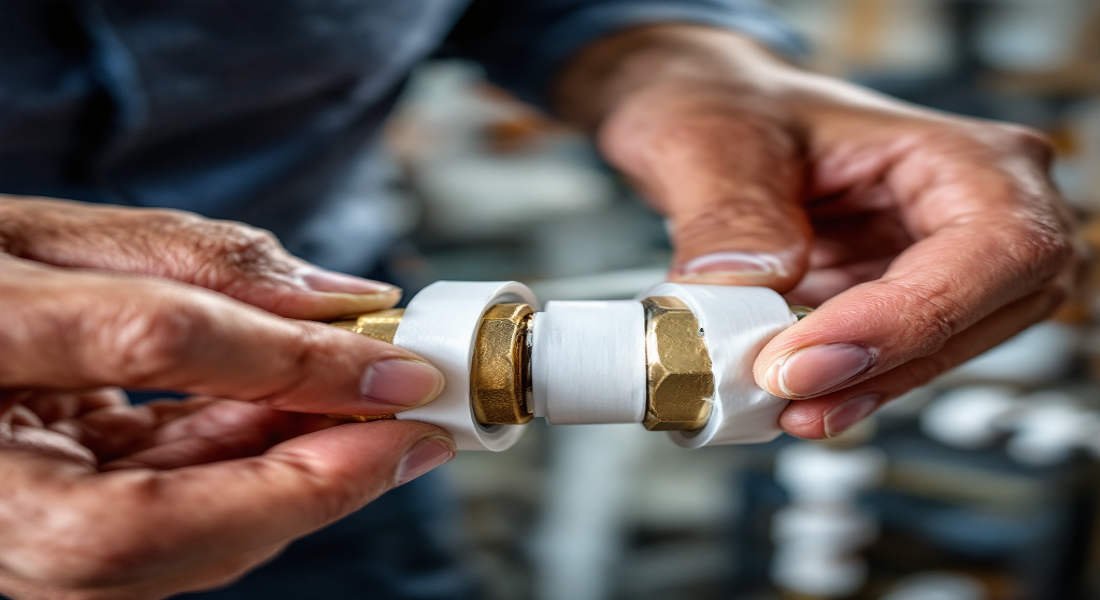
One of the most common questions homeowners ask is: “How much house plumbing tape should I use?” Let’s break it down.
Recommended Number of Wraps
For most applications, 2 to 4 wraps of plumbing tape around the pipe threads are sufficient.
- Thicker Tape: Requires fewer wraps, typically 2-3.
- Thinner Tape: May require 4-5 wraps to achieve a proper seal.
Wrapping in the Right Direction
Always wrap the tape clockwise, in the same direction as the threads. This ensures that the tape doesn’t unravel when you tighten the connection.
Consequences of Overwrapping and Underwrapping
- Overwrapping: This can cause the tape to bunch up, leading to a poor seal. It may also make it difficult to screw the connection together.
- Unwrapping: This may result in leaks, as there isn’t enough tape to fill the gaps.
Tips for Proper Application
- Keep the tape flat and tight as you wrap it around the threads.
- Avoid overlapping too much; the goal is a smooth, even layer.
- Tear or cut the tape cleanly to avoid loose ends.
Step-by-Step Guide to Applying Plumbing Tape Effectively
Follow these steps for a foolproof application:
You may also read (home plumbing under the sink).
Prepare the Pipe
- Clean the threads thoroughly to remove dirt, oil, or debris.
- Ensure the threads are dry for better tape adhesion.
Start Wrapping
- Begin at the base of the threads, leaving the first thread exposed to avoid tape fragments entering the pipe.
- Wrap the tape clockwise, overlapping slightly with each turn.
Maintain Tension
- Keep the tape taut as you wrap, ensuring it lies flat without bunching.
Finish and Secure
- After completing 2-4 wraps, snap or cut the tape cleanly.
- Press the end of the tape into the threads to secure it.
Assemble the Connection
- Tighten the connection as needed, ensuring the tape remains in place.
Choosing the Right Plumbing Tape for Your Home Project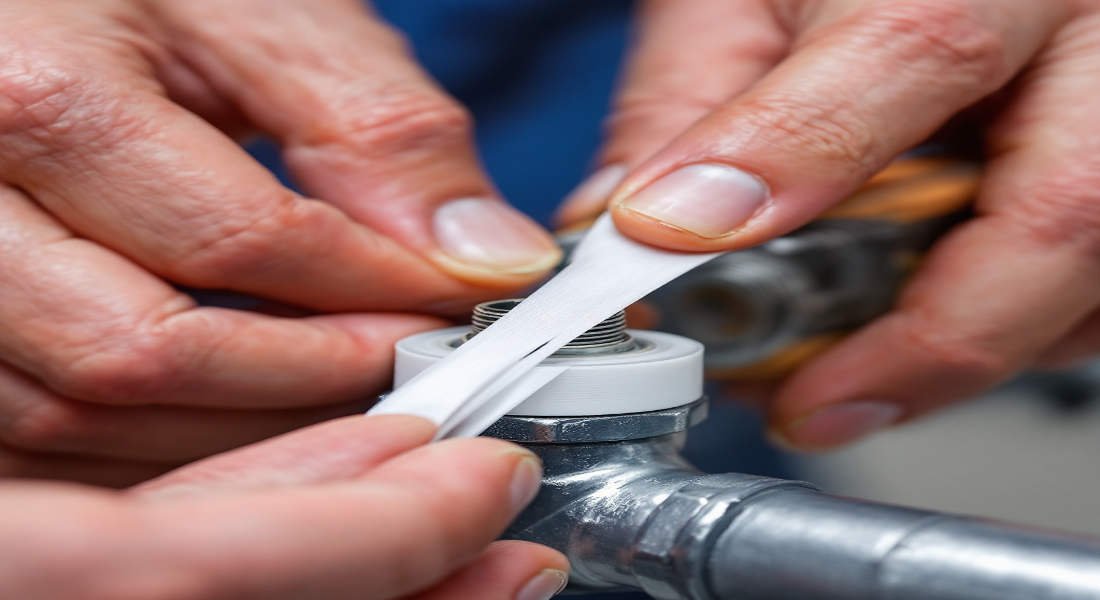
Not all plumbing tapes are created equal. Here’s what you need to know when selecting the right one:
ColorUse CasePipe Size
White General-purpose plumbing Pipes under 3/8 inch
Yellow Gas pipe connections: All pipe sizes
Red High-density tape for larger pipes Pipes over 3/8 inch
Considerations for Special Applications
- Temperature Resistance: Use high-temperature tape for hot water pipes.
- Chemical Compatibility: Ensure the tape can withstand the type of fluid being transported.
Common Mistakes to Avoid When Using Plumbing Tape
Even seasoned DIYers sometimes make mistakes. Avoid these common pitfalls:
- Using Tape on Unsuitable Materials: Avoid using plumbing tape on PVC or compression fittings.
- Overwrapping: Using too much tape can make connections difficult to tighten.
- Wrapping in the Wrong Direction: Always wrap clockwise!
- Skipping Preparation: Dirty or wet threads can compromise the seal.
- Not Tightening Properly: Loose connections can still leak, even with tape.
Additional Tips and Tricks for Plumbing Tape Use
- Emergency Alternatives: In a pinch, you can use rolled-up paper or plastic wrap as a temporary seal.
- Maintenance Benefits: Plumbing tape makes disassembly easier, as it reduces thread corrosion.
- Replacing Old Tape: Always remove old tape before applying new tape to ensure a proper seal.
Benefits of Proper Plumbing Tape Use for Homeowners
Using plumbing tape correctly offers numerous advantages:
- Leak Prevention: Save your home from costly water damage.
- Cost Savings: Avoid expensive plumber visits for minor repairs.
- Durability: Extend the life of your plumbing fixtures.
- Peace of Mind: Enjoy reliable connections without leaks or failures.
You may also read (pex plumbing a modern solution for homeowners).

